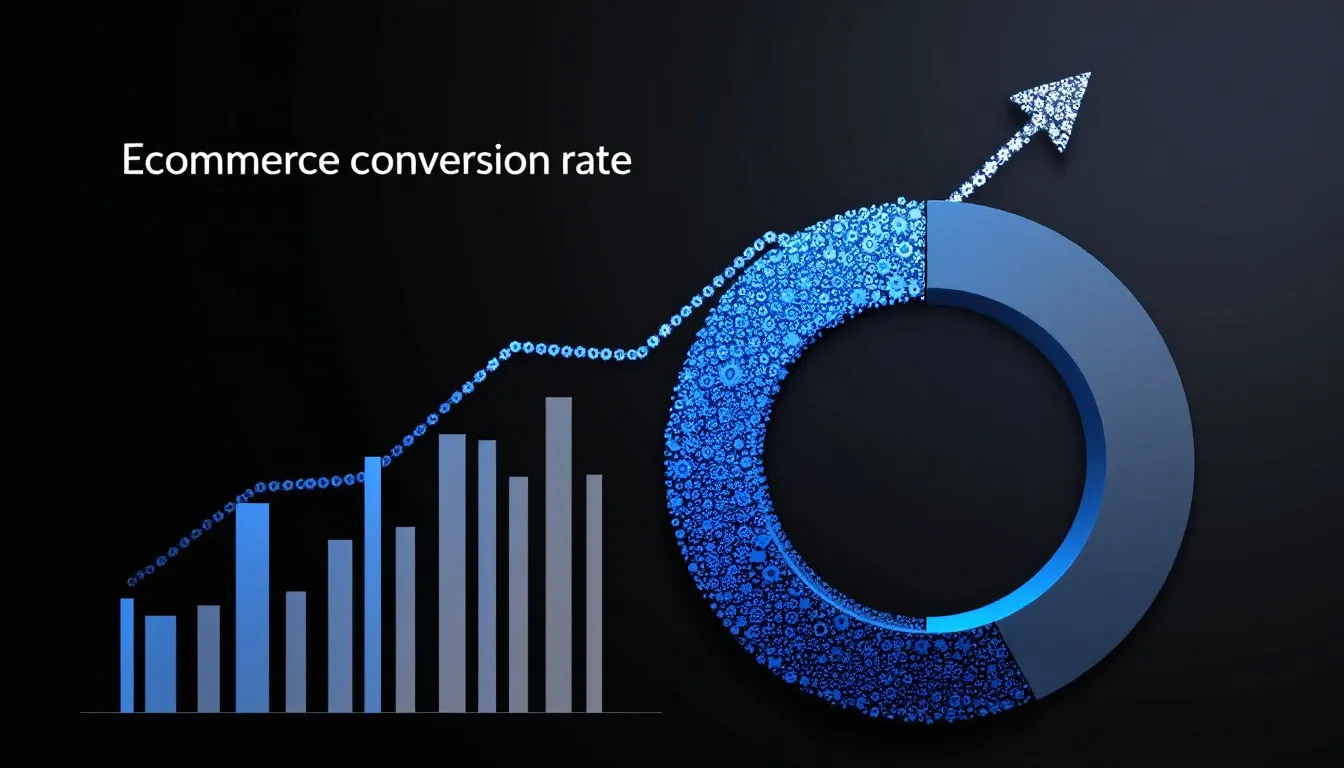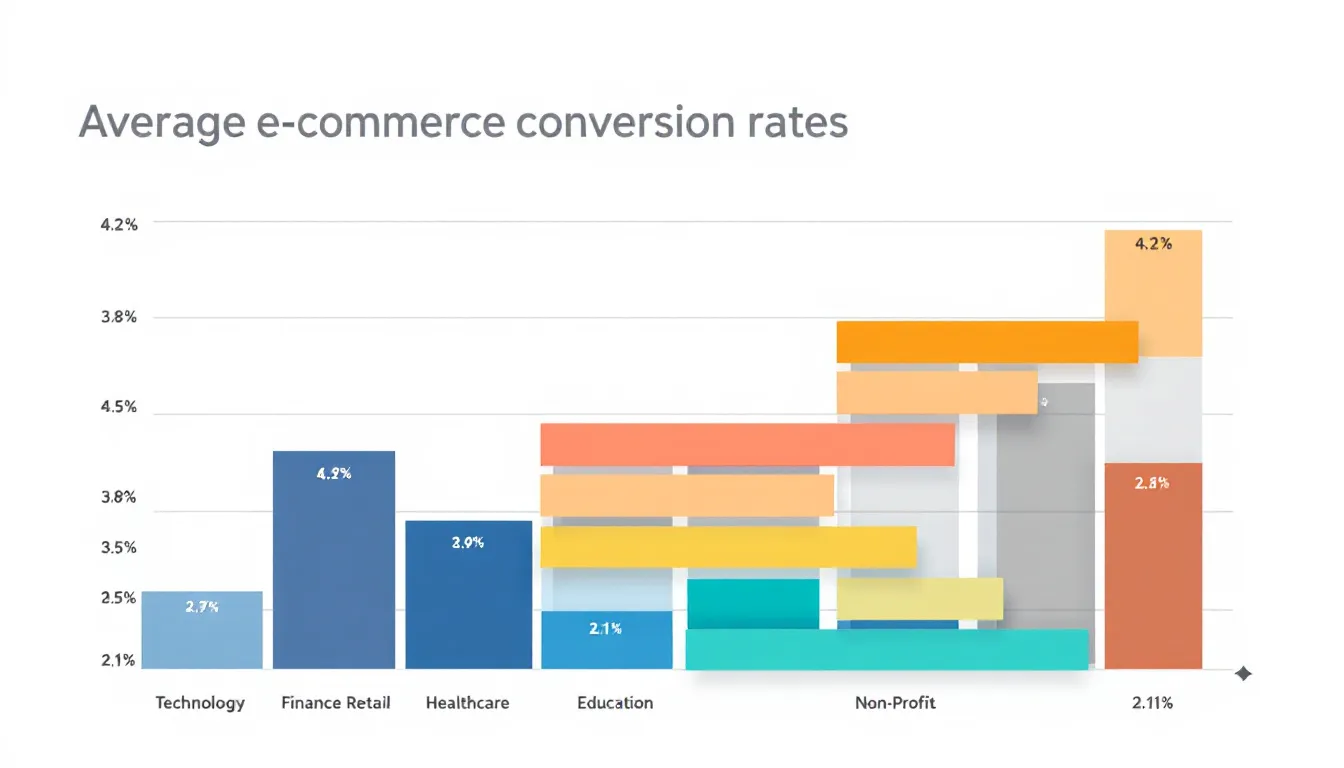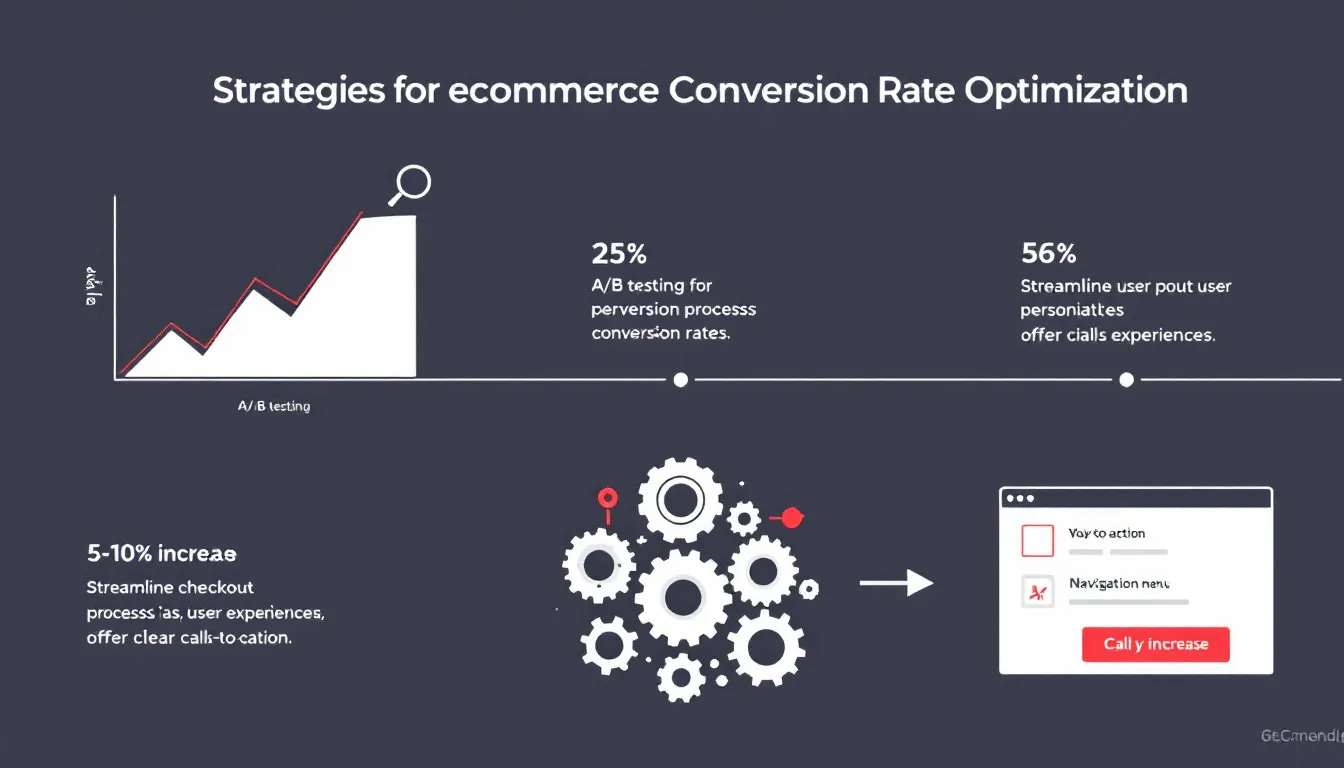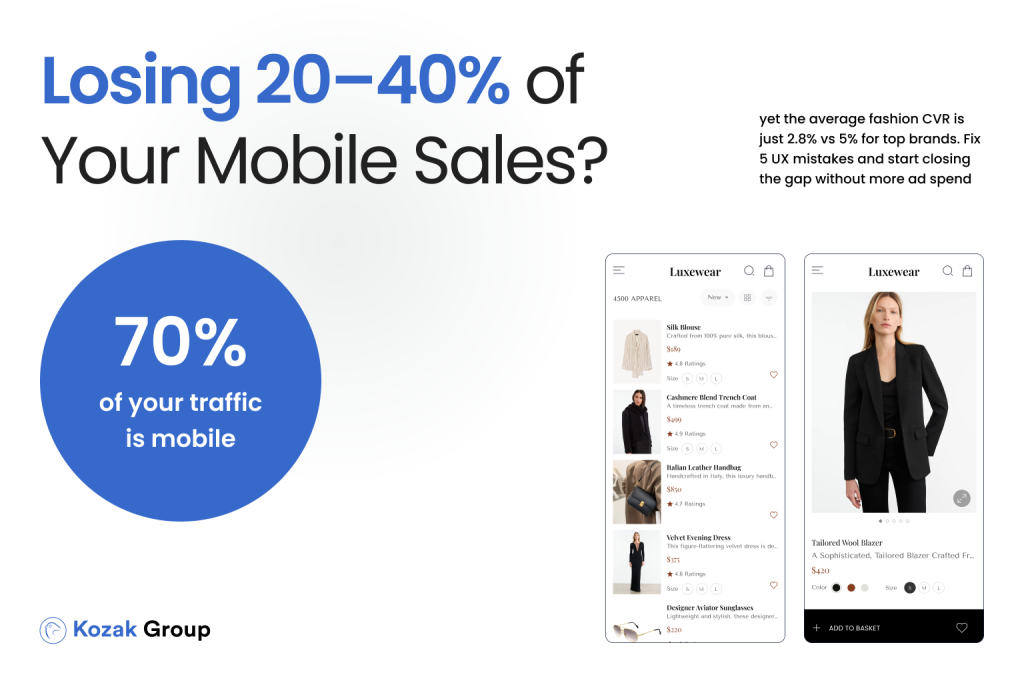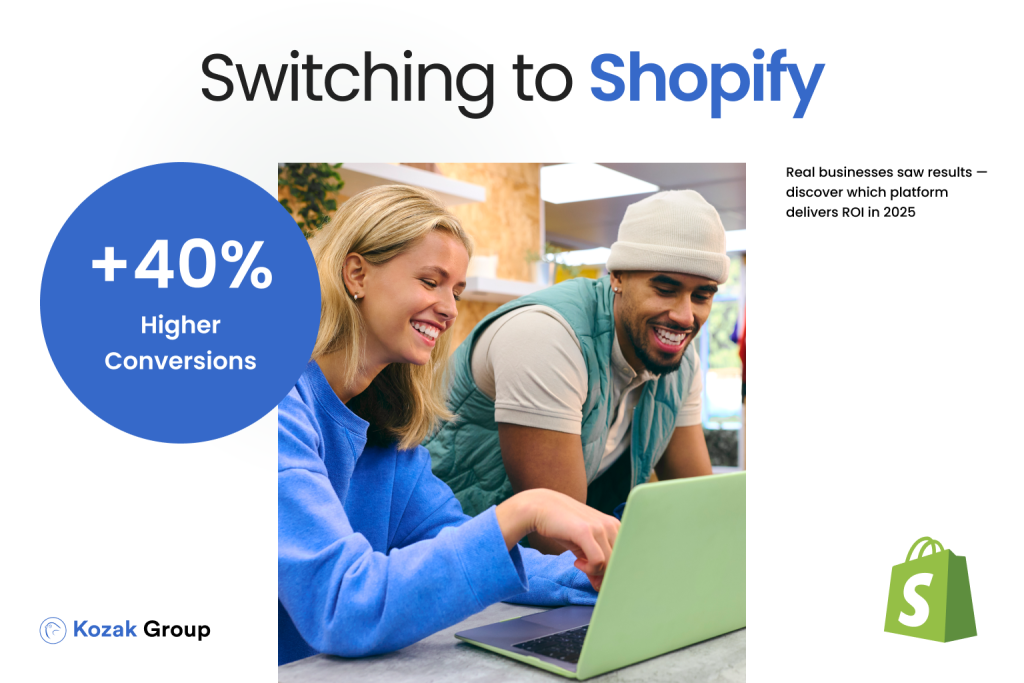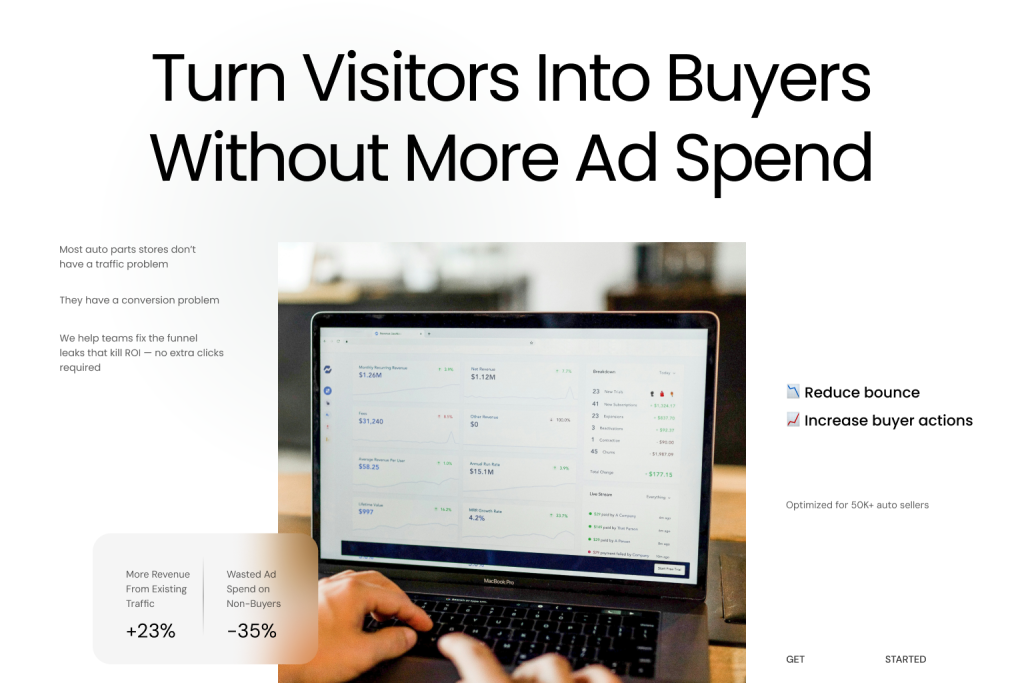Wondering what the typical ecommerce conversion rate is for online stores in 2025? On average, ecommerce sites can expect conversion rates to range between 2% and 4%. In this article, we’ll explore industry-specific benchmarks, factors affecting these rates, and tips to improve your ecommerce conversion rate.
A critical factor in enhancing conversion rates is a well-defined value proposition. Reviewing and refining your value proposition can effectively communicate the unique advantages of your product, ensuring that potential customers understand its relevance and necessity.
Introduction to Ecommerce
Ecommerce, or electronic commerce, refers to the buying and selling of goods and services over the internet. It has become a crucial part of the global economy, with millions of online stores and marketplaces offering a wide range of products and services to customers worldwide. Understanding ecommerce conversion rates is essential for online store owners to optimize their website and improve sales. The average ecommerce conversion rate is a key performance indicator that measures the percentage of website visitors who complete a desired action, such as making a purchase. By focusing on this metric, businesses can gauge their effectiveness in turning site visitors into paying customers and identify areas for improvement.
Key Takeaways
- In 2025, average ecommerce conversion rates are projected to range from 2% to 4%, varying significantly by industry.
- Mobile optimization is crucial as mobile devices account for over half of ecommerce traffic, yet mobile conversion rates remain relatively low at 1.82%.
- Common issues like poor website design, lack of trust signals, and hidden costs contribute to low conversion rates, highlighting the importance of enhancing user experience and transparency.
- Tracking key performance indicators (KPIs) such as conversion rate and average order value is essential to understand business performance and inform strategic decision-making.
Understanding Ecommerce Conversion Rate
The ecommerce conversion rate, also known as the transaction rate, is the proportion of website visits that lead to a desired action, such as completing a purchase or subscribing to a newsletter. It’s an indicator of how many visitors are taking these actions compared to the overall number of visitors. The importance of this metric lies in its ability to show how successful an online store is at convincing users to take the necessary steps.
To determine this conversion rate, divide the number of specific desired actions by the total visit count. For example, if an online store receives 1,000 visits and records 50 sales transactions from those visits, then it has achieved a conversion rate of 5%. Monitoring this key performance indicator is essential for evaluating an ecommerce business’s effectiveness and observing changes following site enhancements.
Average Ecommerce Conversion Rates in 2025
In 2025, the average ecommerce conversion rate is projected to range between 2% and 4%. This good ecommerce conversion rate benchmark provides a reference point for ecommerce businesses to measure their performance against industry standards. Generally, a conversion rate between 2% and 3% is considered effective, with rates above 3% seen as particularly strong.
Conversion rates can vary depending on the product category, as factors such as market competition and customer behavior within specific categories can influence overall performance.
Different industries have varying expectations. For example, the average conversion rate for electronics is projected to be around 2.8%, while the beauty industry is expected to see an overall average of 2.5%. Home goods ecommerce sites are anticipated to have a slightly higher average conversion rate of approximately 3.1% in 2025, contributing to the average conversion rates across various sectors.
These figures highlight the importance of knowing specific benchmarks for your industry.
Industry-Specific Ecommerce Conversion Rates
The conversion rate can differ widely among various sectors due to aspects like the essential nature of products and patterns in customer behavior. Take, for example, the electronics and home appliances domain that has an average conversion rate hovering around 3.6%, yet it struggles with keeping customers engaged long-term, which could potentially lead to a boost in conversions. In contrast, those dealing in food and beverages experience what’s considered a reasonable conversion rate at 2.6%, with consumers balancing their desire for convenience against the quality of products offered. Recognizing these industry-specific benchmarks is key for companies when establishing attainable objectives.
In retail segments such as fashion and jewelry, there’s a more modest average conversion rate situated near 1.9%. Higher-priced products in these segments often necessitate more consideration from consumers before making a purchase. On another note, industries related to personal care items – pet care included – exhibit an impressive average convergence rate reaching up to 6.8%. This high figure is attributed to strong demand coupled with expectations that this market will continue its upward trend through at least 2025. Hence indicating potential growth opportunities within this space. Grasping these differential rates aids ecommerce sectors not only in formulating realistic aspirations but also allows them flexibility when devising strategies tailored specifically towards enhancing conversions.
Device-Specific Conversion Rates
Over 50% of all traffic on ecommerce sites now comes from mobile devices, highlighting the necessity for refining the mobile user experience. Nevertheless, conversion rates on these devices are typically modest, with an average rate standing at just 1.82%. It is noteworthy that within this context, the top decile of mobile fashion retailers manage to outperform others significantly by obtaining a conversion rate above 3.4%.
When evaluating specific device types like tablets, there is often a comparative increase in ecommerce conversions – usually between 3-5% higher than what’s seen with smartphones. Conversion rates can vary significantly depending on the device type used by the consumer. In contrast, desktop users tend to spend more money per purchase made online – their respective industry can influence their standard conversion rates greatly – for instance. Travel websites accessed via desktop see a respectable transaction success rate of about 0.5%, which assists in elevating overall revenue figures.
These data points emphasize the criticality of enhancing aspects such as creating an intuitive design conducive to browsing on-the-go and ensuring brisk website performance along with streamlining payment procedures – all geared towards improving both individual transactions and cumulative conversions across mobile platforms while simultaneously augmenting customer satisfaction levels through improved usability.
Regional Differences in Ecommerce Conversion Rates
Conversion rates in ecommerce can differ significantly from one region to another, influenced by local consumer habits, economic conditions, and the state of digital infrastructure. Conversion rates can also vary depending on other factors such as local consumer habits and economic conditions. For example, in 2022, the conversion rate averaged at 2.3% in the United States whereas it was considerably higher at 4.1% in the United Kingdom due to its mature online shopping culture.
In Germany, ecommerce conversions matched up with the worldwide average conversion rate sitting around 2.22%. Countries like Italy exhibit notably lower conversion rates—only reaching about 0.99%, highlighting a need for strategies that build trust and improve localized payment methods to boost shoppers’ confidence.
Recognizing these geographical variances is vital for companies aspiring to broaden their market reach internationally when considering ecommerce conversion strategies.
Channel-Specific Conversion Rates
Marketing channels each have distinct conversion rates, highlighting the importance of a varied marketing approach. Referral traffic stands out with notably higher conversion rates compared to other sources and proves particularly effective as a traffic source when dealing with large volumes. To enhance performance, it’s advantageous to concentrate on the top converting traffic channels. Additionally, understanding traffic sources and how they influence conversion rates is crucial, as websites drawing traffic from advertisements or blog posts may experience lower conversion rates compared to those gaining visitors from existing customers or social media.
Social media platforms are key players in this arena, where Facebook can achieve conversion rates of up to 9.21%, whereas Instagram hosts around 1%. Paid search initiatives also deliver compelling results with average conversion rates close to 4.8%. Email marketing has been known to attain conversions between 2% and 5% through carefully targeted advertisements.
When considering direct traffic conversions, they typically occur at roughly 3.5%, while organic search tends toward conversion rates in the range of 2-4%. Leveraging an array of these channels is beneficial for amplifying your reach and escalating overall conversions.
Measuring Your Ecommerce Conversion Rate
Monitoring conversion rates is essential to understand your business’s efficacy and pinpoint opportunities for enhancement. Tracking key performance indicators (KPIs) aligned with your business objectives, such as conversion rate and customer lifetime value, is crucial for a comprehensive understanding of your performance. Commonly, analytics tools such as Google Analytics are employed for gauging ecommerce conversion rates. The latest iteration, GA4, offers a comprehensive perspective of user behavior by recording interactions in the form of events.
GA4 enables you to assess the ecommerce conversion rate by examining the ratio of individual users who complete a conversion event against the overall user base. Through its enhanced measurement capabilities, GA4 facilitates detailed tracking of specific ecommerce actions like viewing products and making purchases to deepen your understanding.
To ensure efficient monitoring and improvement efforts, it’s crucial to tailor your reports so they encompass these pivotal metrics related specifically to conversions within an ecommerce context.
Calculating Average Ecommerce Conversion Rates
Calculating average ecommerce conversion rates is a straightforward process. It involves dividing the total number of conversions (e.g., sales, sign-ups) by the total number of website visitors, and then multiplying by 100 to get a percentage. For example, if an online store had 1,000 visitors and 20 sales, the conversion rate would be 2%. Ecommerce conversion rates can be influenced by various factors, including website design, product offerings, marketing strategies, and customer behavior. Understanding these factors is crucial to improving conversion rates and increasing sales. By regularly monitoring and analyzing these rates, businesses can make data-driven decisions to enhance their online store’s performance.
Quick Tips to Improve Your Ecommerce Conversion Rate
Enhancing the ecommerce conversion rate can be achieved through incremental changes that have a substantial effect. Employing high-resolution product images can elevate customer interest, while focusing on articulating the advantages of products over just their features may better captivate and engage customers, leading to improved conversion rates.
Ensuring your ecommerce site is fine-tuned for mobile users has become critical with the surge in sales coming from mobile devices. Streamlining the checkout process by reducing superfluous form fields and incorporating a progress bar can greatly improve user experience during transactions.
Boosting buyer assurance through offering free shipping and spurring quicker purchase actions by indicating limited stock availability with alerts are strategic moves to foster an increase in shopper confidence and expedite purchasing decisions.
Common Misconceptions About Ecommerce Conversion Rates
Several prevailing myths about ecommerce conversion rates could potentially lead you astray when making business choices. For example, it’s a common fallacy that adopting trendy color schemes automatically leads to higher conversions. What appeals visually to successful site visitors is not universal. There is a false belief that users aren’t interested in engaging with extensive content, yet studies indicate they are inclined to read more comprehensive text provided it contains useful information.
There’s also an incorrect assumption that speculation can resolve issues related to dismal conversion figures when in fact effective solutions hinge on data-driven insights rather than mere guesswork. Copying elements from another website might seem like a surefire path to boosting your own ecommerce conversion success, but this isn’t necessarily the case. Understanding the target audience is crucial, as conversion rates can vary significantly based on the specific demographics and preferences of the target audience. Recognizing and understanding these misconceptions is vital for informed decision-making processes aimed at enhancing your ecommerce conversion outcomes.
Why Your Conversion Rate Might Be Low
Numerous elements and additional factors may lead to a diminished ecommerce conversion rate on online shopping platforms. Subpar website aesthetics can drastically influence conversions, with perplexing product displays and lackluster prompts to act not captivating users. The absence of trust indicators like straightforward return guidelines and available customer assistance options can breed skepticism and dissuade transactions. Additionally, a weak value proposition can prevent potential customers from understanding the unique advantages of a product, leading to low conversion rates.
Inapt marketing tactics, such as neglecting the refinement of checkout procedures or omitting to offer guest checkout alternatives or diverse payment methods, might also be responsible for depressed conversion rates. Tackling these hurdles is imperative for enhancing overall conversion rates in pursuit of more favorable business results.
Ecommerce Conversion Rate Optimization Strategies
Enhancing your ecommerce conversion rate necessitates a thorough approach. Conducting user tests is pivotal for pinpointing navigation problems and accruing immediate understanding of consumer interactions. Employing a dependable ecommerce platform can greatly affect the propensity for conversions by improving both user experience and scalability.
The presence of superior product visuals bolsters consumer confidence, thereby elevating the chance of sales. A/B testing serves as an essential component in optimizing conversion rates, but must be incorporated into a wider strategy that evaluates the impact of branding and communication overall. Additionally, focusing on loyal customers can significantly enhance conversion rates, as they are more likely to make repeated purchases and subscribe to services.
Instilling a sense of urgency with offers available only for a limited period can act as an efficient incentive to encourage potential customers to complete their purchases within the designated time frame.
The Impact of Cart Abandonment on Conversion Rates
Cart abandonment poses a critical challenge, significantly diminishing ecommerce conversion rates and resulting in an estimated annual loss of $18 billion in sales revenue. When customers encounter unexpected costs, such as hidden shipping fees at checkout, they frequently abandon their carts. Other prominent reasons for cart abandonment include prolonged delivery times and the absence of transparent pricing.
To mitigate this issue and boost conversion rates, it’s vital to adopt measures that address cart abandonment. Reminders targeting users who have abandoned their shopping carts can nudge them towards completing their purchases. Providing options for guest checkout and deploying exit-intention pop-ups can greatly reduce cart abandonment occurrences.
Integrating product pricing within the final stages of the ecommerce conversion process keeps shoppers informed about what they’re committed to purchase while presenting diverse payment methods builds trust with potential buyers – both strategies serving to enhance overall customer confidence during transactions.
Luxury Ecommerce
Luxury ecommerce refers to the online sale of high-end products and services, such as designer clothing, jewelry, and luxury travel experiences. Luxury ecommerce websites often have higher average conversion rates due to their targeted audience and high-quality products. However, luxury ecommerce also comes with its own set of challenges, such as high customer expectations and intense competition. To succeed in luxury ecommerce, online store owners must focus on creating a premium customer experience, offering high-quality products, and providing excellent customer service. This includes personalized shopping experiences, exclusive offers, and ensuring that every touchpoint reflects the brand’s luxury status. By meeting and exceeding customer expectations, luxury ecommerce sites can achieve higher conversion rates and foster customer loyalty.
Shopify and Amazon Conversion Rates
Shopify and Amazon are two of the largest ecommerce platforms in the world, with millions of online stores and customers. The average conversion rate for Shopify stores is around 1.4%, while Amazon’s conversion rate is significantly higher, at around 10-15%. However, Amazon’s conversion rate is influenced by its vast customer base and trusted brand reputation. Shopify store owners can improve their conversion rates by optimizing their website design, improving product offerings, and using targeted marketing strategies. Understanding ecommerce conversion rate benchmarks is essential to comparing performance and identifying areas for improvement. By leveraging tools like Shopify’s Analytics and implementing best practices, Shopify store owners can enhance their site’s conversion rate and drive more sales.
Summary
Mastering the nuances of ecommerce conversion rate is critical to the prosperity of your online store. This blog has delved into multiple facets of conversion rates, including anticipated benchmarks for 2025, variations specific to different industries, disparities based on device usage and geographic location, as well as actionable advice for enhancement. By diligently monitoring and quantifying these rates through platforms like Google Analytics, you’re equipped with crucial insights that support informed decision-making to propel your business forward.
To wrap it up, honing in on tactics for conversion rate optimization by dispelling prevalent myths and executing efficient strategies aimed at minimizing shopping cart abandonment can markedly elevate your ecommerce triumphs. Keep abreast of developments, adopt a forward-thinking approach and persistently refine your website’s user experience to attain superior conversion rates that culminate in increased sales figures.
Further Reading and Resources
For online store owners looking to improve their ecommerce conversion rates, there are many resources available. Google Analytics is a powerful tool for tracking website traffic and conversion rates, while other analytics tools, such as Shopify’s Analytics, can provide valuable insights into customer behavior and sales trends. Additionally, there are many online resources and guides available that offer tips and strategies for improving conversion rates, such as simplifying checkout processes, offering free shipping, and using social proof. By understanding ecommerce conversion rates and using the right tools and strategies, online store owners can optimize their website and increase sales. Leveraging these resources can be a game changer in achieving better conversion rates and overall business success.
Frequently Asked Questions
What is an ecommerce conversion rate?
An ecommerce conversion rate, also known as an online store conversion rate, is the percentage of website visitors who complete a desired action, like making a purchase or signing up for a newsletter.
Understanding this metric is essential for optimizing your online sales and marketing efforts.
What is considered a good ecommerce conversion rate in 2025?
A good ecommerce conversion rate in 2025 is generally considered to be between 2% and 3%, with rates exceeding 3% viewed as particularly strong. A good conversion rate of 5% is often considered average, but this can differ significantly by industry and specific market conditions. Factors such as consumer behavior, product pricing, and audience targeting all influence what constitutes a good conversion rate for different sectors.
How do conversion rates vary by device?
Conversion rates typically vary by device type, with mobile devices averaging around 1.82%, tablets showing 3-5% higher rates, and desktops often yielding higher transaction values but fluctuating conversion rates depending on the industry.
Understanding these differences is crucial for optimizing your marketing strategy.
What are some quick tips to improve ecommerce conversion rates?
To improve ecommerce conversion rates, focus on high-quality product images, mobile optimization, a simplified checkout process, offering free return shipping, and creating urgency with low stock notifications.
Implementing these strategies can significantly enhance your customer experience and drive sales. Additionally, optimizing site features like navigation and payment options is essential to boost conversions, especially in areas like luxury eCommerce where purchases require more customer consideration and engagement.
Why might my ecommerce conversion rate be low?
A low ecommerce conversion rate may be due to factors such as poor website design, insufficient trust signals, and ineffective marketing strategies. Implementing strategies that lead to more conversions, such as high-converting examples and visual cues, can significantly improve your conversion rates. Addressing these areas can significantly improve your conversion rates.



